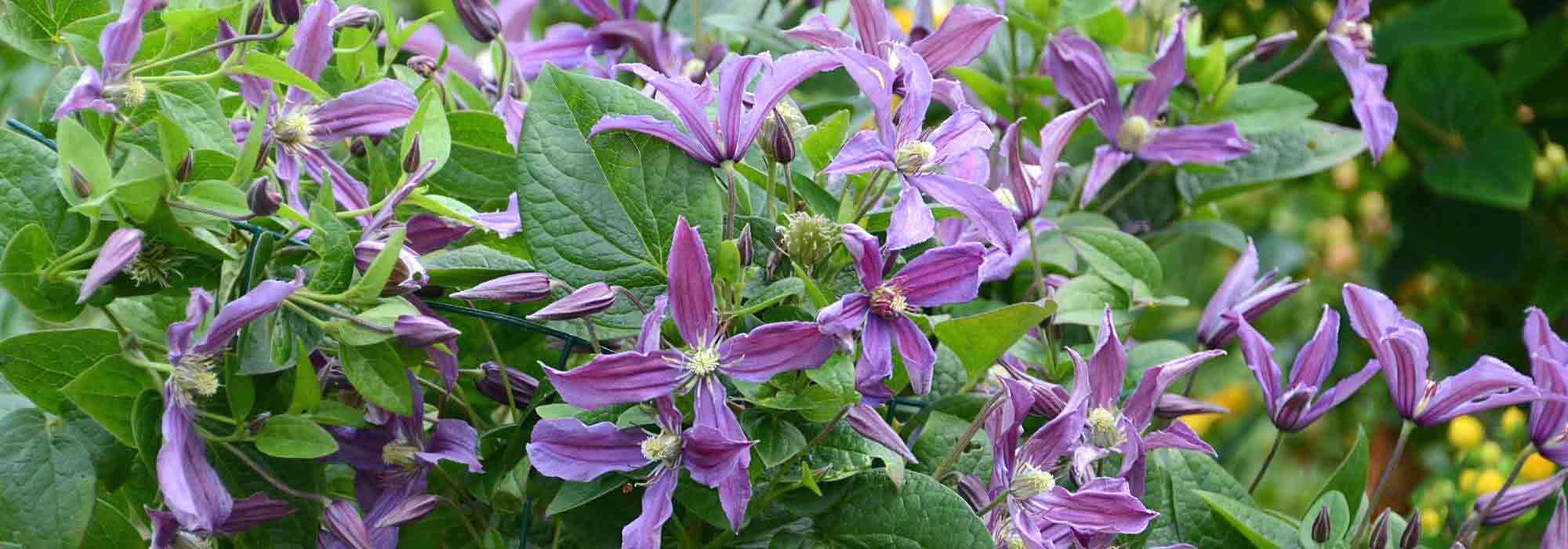
Choosing a herbaceous clematis
Buying Guide and Criteria for Finding the Ideal Clematis
Contents
Herbaceous clematis differ from woody clematis as they are perennial plants that are non or minimally climbing and possess a compact annual foliage, rarely exceeding 1.20 m in height. Perfectly hardy, these perennial plants, which are too seldom used in our gardens, are ideal for beginner gardeners due to their ease of care and floriferous nature. Flowering on the shoots of the year, they require only a pruning at the end of winter and quickly return in the warm days for long months of flowering.
Height, colour, and flowering period or use: here is our buying guide based on different criteria. It will be useful for selecting those that will delight your sunny days, according to your desires or the constraints imposed by your garden!

Clematis integrifolia
According to height
Herbaceous clematis can be small groundcover balls or take the form of taller bushy clumps. To make a choice and pair them appropriately, this height criterion is important, whether the gardener wants to plant them at the front or, conversely, behind more compact bushes or perennials.
The smallest (up to 50 cm)
To be planted at the edge, as groundcover, and at the front of borders, small-growing herbaceous clematis allow for quick and long-lasting flowering in the foreground. The Clematis heracleifolia ‘Pink Dwarf’ reaches 40 cm in height, forming a clump of angular upright and semi-spreading stems, which gives it a width of about 40 cm. The Clematis integrifolia ‘Alba’ and ‘Baby White’ form a bushy clump not exceeding 50 cm in height, with a roughly equivalent spread. A bit slow to establish, they root deeply in the soil before showing faster growth in subsequent years.
The medium (from 70 cm to 1 m)
In this category, to be planted in the mid-ground of borders or in pots on the terrace: The Clematis integrifolia, integrifolia ‘Hakuree’ and integrifolia ‘Rosea’. These three magnificent herbaceous clematis also form bushy clumps not exceeding 75 cm in height, with a spread of 80 cm to 1 m. Each spring, numerous stems emerge from their base, bearing small, deep green, glossy leaves. The bell-shaped flowers bloom from June to September among the foliage.
Rare herbaceous clematis with a very long summer flowering period and intense blue colour, the Clematis ‘New Love’ forms a clump of large velvety green leaves that do not completely disappear in winter, reaching 80 cm in height with a spread of 60 cm. With its bushy clump and large violet star-shaped flowers, the Clematis Saphyra ‘Estrella’ will not exceed 1 m in height, making it suitable for small gardens and for decorating terraces, balconies, and patios, just like the Clematis ‘Stans’ with its lovely pale blue fragrant flowers, the Clematis integrifolia ‘Twinckle’ and the Clematis heracleifolia.
The largest (from 1 to 3 m)
Playing in the category of large herbaceous clematis, we mention:
- Herbaceous clematis forming generous, highly floriferous clumps, reaching a maximum of 1.50 m: Clematis heracleifolia ‘Côte d’Azur’, Clematis fusca, Clematis ‘I am Stanislaus’, Clematis integrifolia ‘Blue River’, Clematis jouiniana ‘Robert Brydon’, or the Clematis integrifolia ‘Saphyra Duo Rose’.
- The Clematis integrifolia ‘Blue Boy’, both climbing and bushy, with long leafy stems reaching up to 1.80 m in length. It offers a multitude of pendulous bell-shaped flowers in light mauve blue.
- Clematis mandshurica, a herbaceous perennial that produces long stems each year, which can reach 3 to 4 m in length. They climb but also cover the ground and produce a cloud of small white stars throughout the summer.
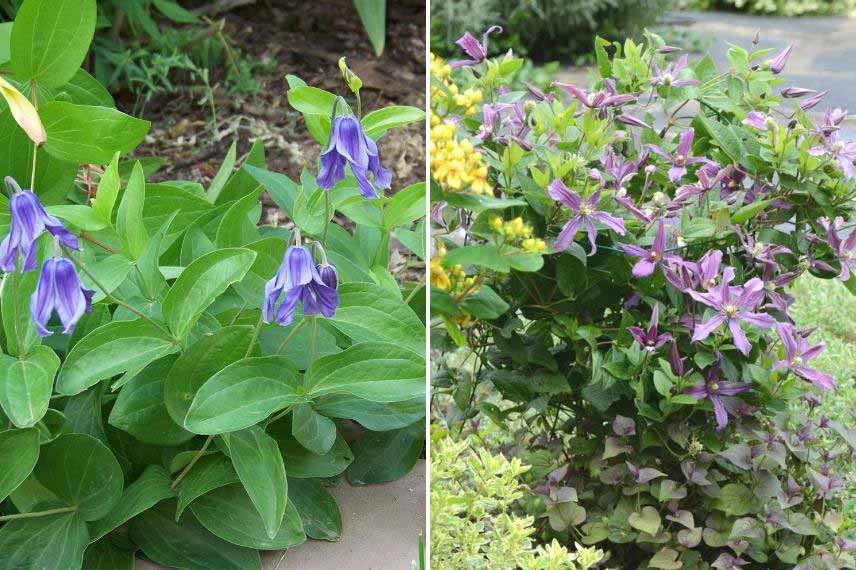
Clematis ‘New Love’ and Clematis Saphyra ‘Estrella’
Read also
Clematis: planting, pruning and careAccording to the colour of the flowers
The colour palette of herbaceous clematis includes pink, blue-violet, or white flowers. The effect varies between the highly floriferous varieties that are covered in a multitude of small flowers and those that display large, simple star-shaped corollas. Here again, the contrast can be interesting for garden displays, depending on the plants they are associated with: in flowering beds, rockeries, or borders.
Herbaceous clematis with white flowers
- Clematis integrifolia ‘Alba’, ‘Baby White’ and ‘Hakuree’ with campanulate flowers
- Clematis mandshurica, with small white stars throughout the summer
- Clematis recta ‘Purpurea’ with its purple foliage highlighting its multitude of small fragrant white flowers
Herbaceous clematis with pink flowers
- Clematis heracleifolia ‘Pink Dwarf’, forming clusters of pale pink tubular and reflexed bells
- Clematis integrifolia ‘Rosea’ distinguished by the colour of its flowers, medium rose-mauve, as well as by the generosity of its flowering
- or the Clematis integrifolia ‘Saphyra Duo Rose’ with its large star-shaped pink flowers
Herbaceous clematis with pale mauve flowers
- Clematis ‘I am Stanislaus’, with pale blue reflexed petals
- Clematis integrifolia ‘Twinckle’ with its summer flowering of fine, delicately scented bells
- Clematis jouiniana ‘Robert Brydon’, a magnificent herbaceous groundcover clematis that forms a beautiful carpet of small pale mauve flowers
Herbaceous clematis with blue and violet flowers
- Clematis heracleifolia ‘Côte d’Azur’: it flowers from July to October with a multitude of small blue-violet flowers with white centres
- Clematis integrifolia, whose summer flowering features delicately scented blue bells
- Clematis integrifolia ‘Blue River’ which offers charming bell-shaped flowers in a soft mauve blue
- Or the clematis ‘New Love’, with its very long summer flowering in intense blue.
→ To read: Discover 9 Herbaceous Clematis with Blue Flowers.
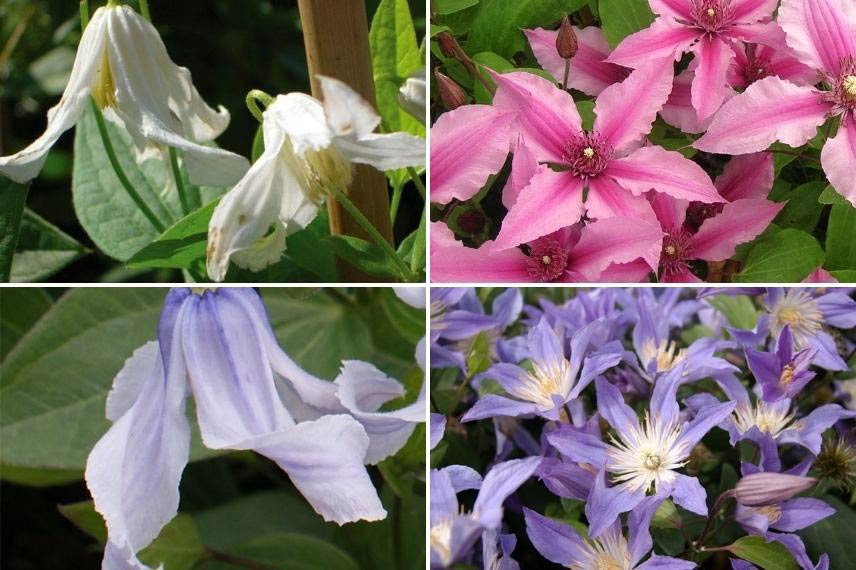
Clematis integrifolia ‘Alba’, Clematis integrifolia ‘Saphyra Duo Rose’, Clematis integrifolia ‘Twinckle’ and Clematis integrifolia ‘Blue River’
Discover other Herbaceous Clematis
View all →Available in 1 sizes
Available in 1 sizes
Available in 2 sizes
Available in 1 sizes
Available in 1 sizes
Available in 1 sizes
Available in 1 sizes
Available in 1 sizes
Available in 1 sizes
Available in 1 sizes
According to the flowering period
- Early herbaceous clematis
Herbaceous clematis integrifolia bloom abundantly in late spring, then more sporadically throughout the summer until the end of August. The flowering is followed by the formation of feathery, silver fruits, which are very decorative at the end of the season. The same goes for Clematis fusca, Clematis jouiniana ‘Robert Brydon’, and Clematis Saphyra ‘Estrella’.
- Summer herbaceous clematis
From July to October, the spotlight shifts to Clematis ‘New Love’, heracleifolia ‘Côte d’Azur’, and the large Clematis mandshurica.
- Late herbaceous clematis
Clematis stans begins its flowering in August-September, making it interesting for late-season blooms when many other perennials have finished flowering. Clematis heracleifolia flowers in autumn (September to October), at a time when other herbaceous clematis have already finished blooming. It is a very beautiful and original perennial, too rare in our gardens, well adapted to cold and clay soils.
Read also
7 ideal Clematis for potsAccording to the habit and uses
In general, herbaceous clematis are interesting for their dense and compact habit, allowing for the creation of natural and somewhat wild atmospheres. Some, like the clematis integrifolia, tolerate drought quite well once well-rooted and exhibit a great adaptability to all kinds of climates and soils.
Apart from Clematis mandshurica and Clematis integrifolia ‘Blue Boy’, which are too large, do not hesitate to plant them in lovely pots. Their habit and moderate size make them perfectly suited for this use. Placed near the entrance or on the terrace, they will brighten up the beautiful days with their incomparable flowering.
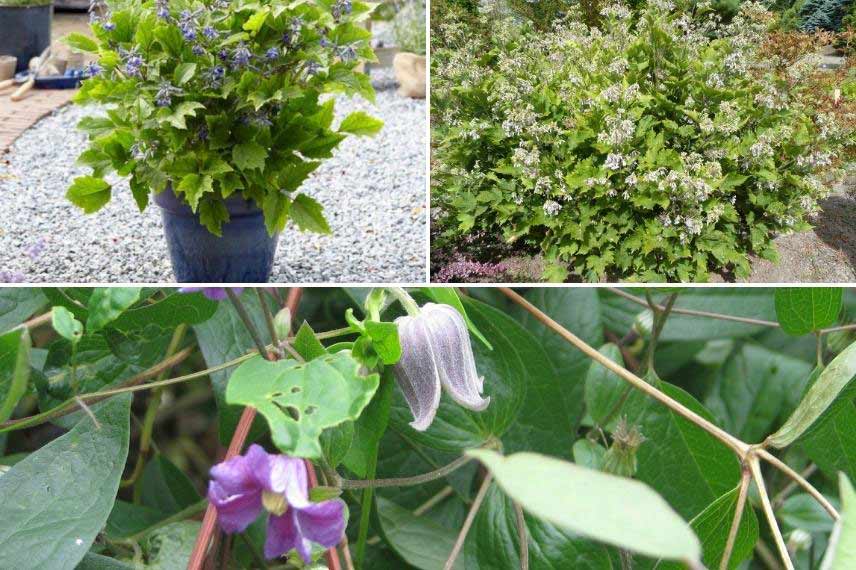
Clematis integrifolia (Patrick Standish-flickr), Clematis heracleifolia (Wendy Cutler- Flickr) and Clematis fusca violacea (peganum -Flickr)
- Subscribe!
- Contents
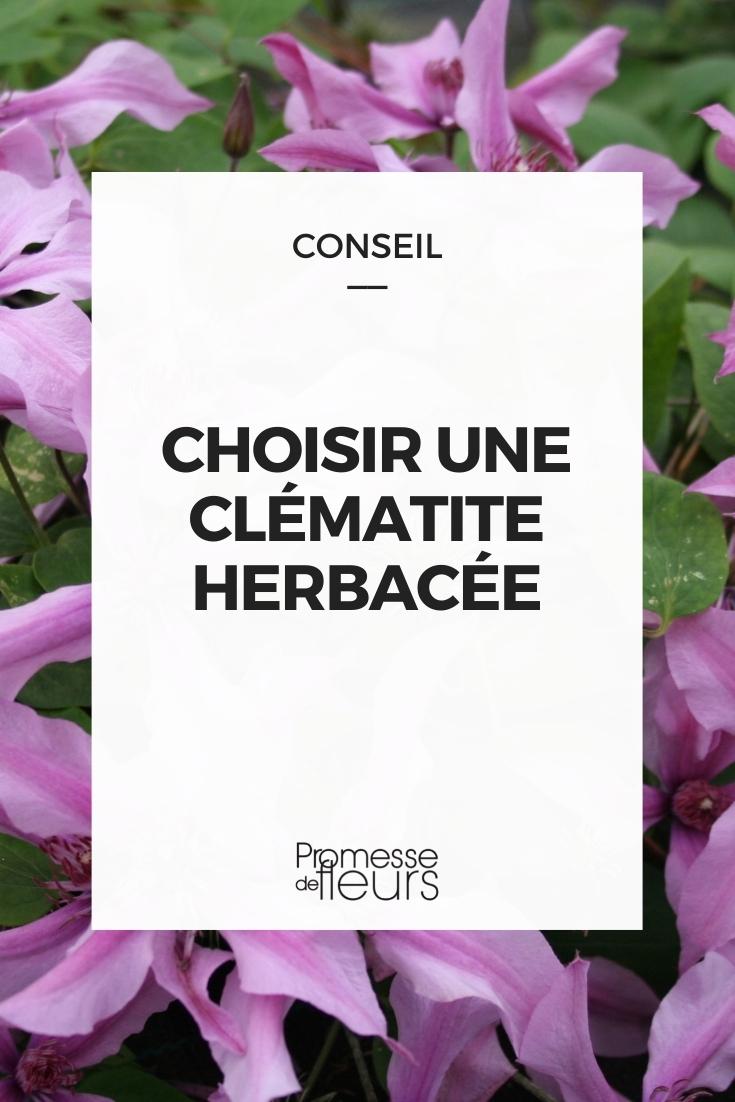































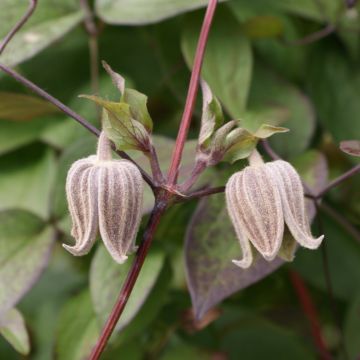
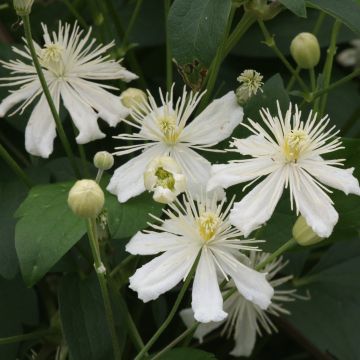
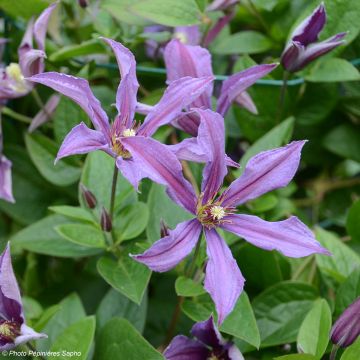
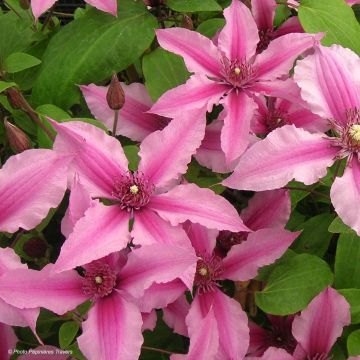



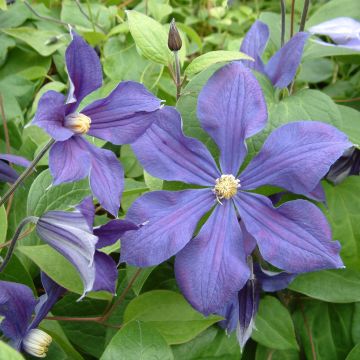
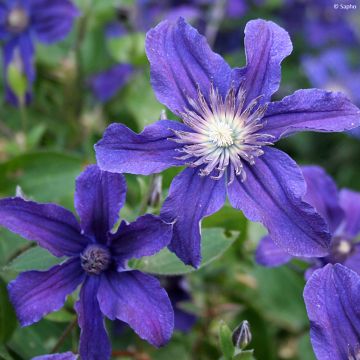
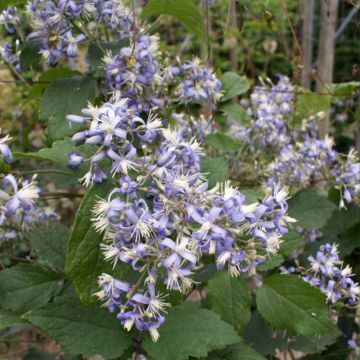
Comments